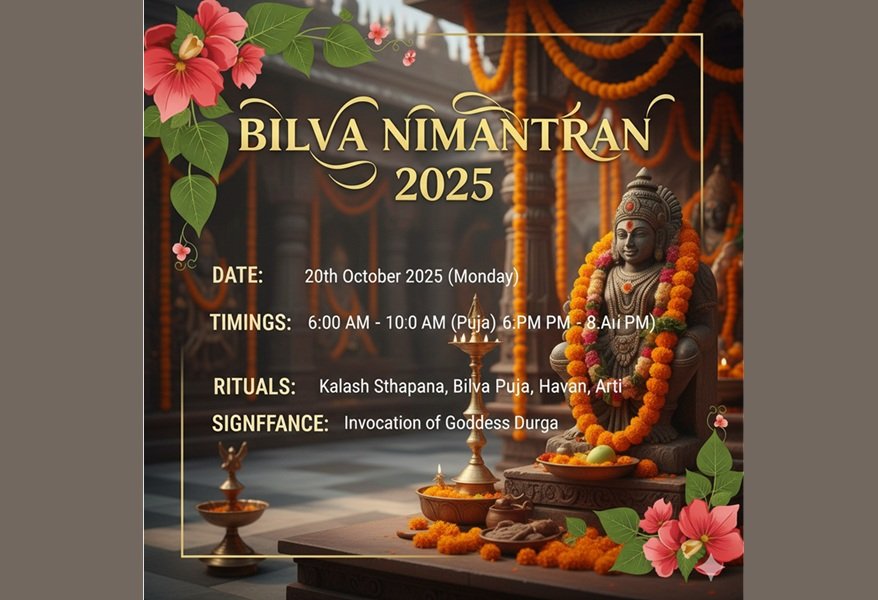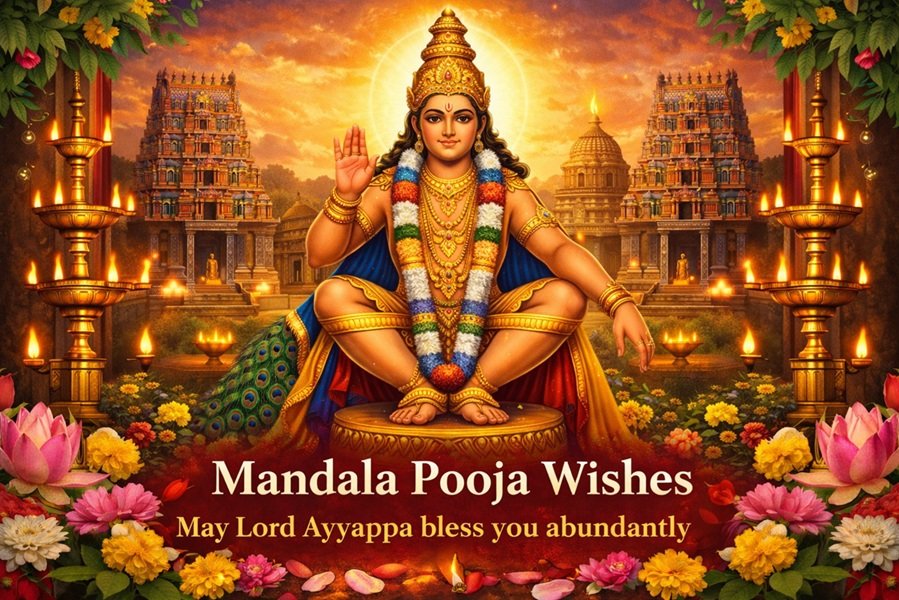
Bilva Nimantran on Saturday, September 27, 2025
- Bilva Nimantran Muhurat: 03:48 PM to 06:12 PM
- Duration: 2 Hours 24 Minutes
- Bilva Nimantran falls on Panchami Tithi
- Shashthi Tithi Begins: 12:03 PM on September 27, 2025
- Shashthi Tithi Ends: 02:27 PM on September 28, 2025
What is Bilva Nimantran?
Bilva Nimantran is a highly significant ritual in the Durga Puja celebrations, especially in Bengal and other eastern states of India. It marks the formal invocation of Goddess Durga into the sacred Bilva tree (also known as Bael tree), which is regarded as an embodiment of the goddess herself.
The ritual is performed on the Shashthi Tithi (sixth day) of the lunar calendar during Sharad Navratri, but the actual Bilva Nimantran takes place on the preceding Panchami Tithi, in the evening. This ceremony sets the spiritual foundation for the grand worship of Maa Durga during the following days of Durga Puja.
The Timings for Bilva Nimantran in 2025
In 2025, Bilva Nimantran falls on Saturday, September 27, with the auspicious muhurat as follows:
- Start Time: 03:48 PM
- End Time: 06:12 PM
- Duration: 2 Hours 24 Minutes
Since Bilva Nimantran is performed on Panchami Tithi but is closely associated with the beginning of Shashthi Tithi, devotees must carefully observe the timings to ensure the ritual is conducted within the prescribed muhurat.
Significance of Bilva Tree in Worship
The Bilva (Bael) tree holds deep spiritual meaning in Hinduism. Its trifoliate leaves are considered sacred and symbolize Lord Shiva’s trident (Trishul). During Durga Puja, the Bilva tree becomes the medium through which Maa Durga is invoked and worshipped before the grand rituals of Shashthi, Saptami, Ashtami, and Navami unfold.
By inviting the goddess into the Bilva tree, devotees express their readiness to welcome her divine presence into their homes, hearts, and communities. It is believed that Bilva Nimantran ensures prosperity, strength, and divine blessings throughout the festival and beyond.
Rituals of Bilva Nimantran
The Bilva Nimantran ceremony follows a traditional sequence of rituals performed by priests and devotees:
- Purification (Shuddhi)
The place of worship and the Bilva tree (or a symbolic branch placed in a sanctified spot) are purified with holy water, incense, and mantras. - Invocation (Aavahan)
Goddess Durga is formally invited to reside in the Bilva tree. Special mantras and prayers are recited to invoke her divine energy. - Offerings (Upachara Puja)
Flowers, fruits, sweets, sindoor (vermilion), and other auspicious items are offered to the Bilva tree as a mark of devotion. - Prayers for Prosperity
Devotees pray for the well-being of their families, seeking strength, protection, and abundance from the goddess. - Cultural Traditions
In Bengal, the ceremony often marks the beginning of festive gatherings, where families come together, and communities prepare for the grandeur of Durga Puja pandals.
Bilva Nimantran and Durga Puja
Bilva Nimantran is deeply interwoven with the cultural fabric of Durga Puja, one of the grandest festivals in India. After the invocation, the festival officially enters its most celebrated phase with Bodhon (installation of the idol) on Shashthi, followed by the magnificent rituals of Maha Saptami, Maha Ashtami, Maha Navami, and Vijayadashami.
The ceremony symbolizes the arrival of the goddess on earth, where devotees welcome her like a beloved daughter returning to her maternal home.
Spiritual Benefits of Observing Bilva Nimantran
Performing Bilva Nimantran with devotion is believed to bring multiple blessings:
- Invites divine protection of Goddess Durga in the household.
- Removes obstacles and negative energies from life.
- Ensures prosperity and well-being for family members.
- Marks the beginning of auspicious celebrations, filling the environment with positivity and devotion.
Conclusion
Bilva Nimantran is not just a ritual; it is a heartfelt invitation to Goddess Durga to enter our lives with her divine grace. On Saturday, September 27, 2025, devotees will perform this sacred ceremony during the auspicious period from 03:48 PM to 06:12 PM, marking the spiritual start of Durga Puja festivities.
As Maa Durga descends, Bilva Nimantran reminds us of the eternal bond between devotees and the goddess—a bond built on faith, love, and devotion.





